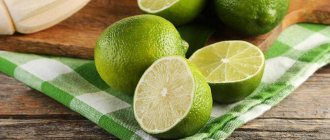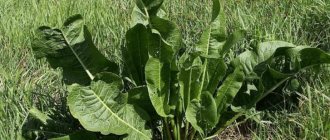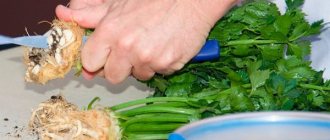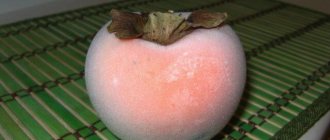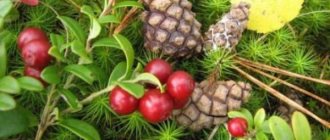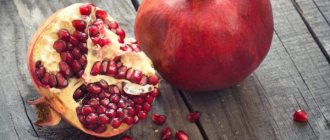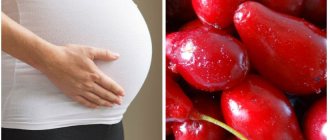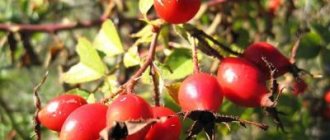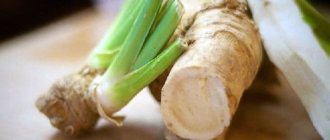Description, reproduction and distribution area of fennel
Biennial or perennial plant of the umbrella family (Umbelliferae).
The root is taproot, fleshy, yellowish-white in color.
The stem is straight, round, finely ribbed, very branched, up to 2 m high.
The leaves are alternate, petiolate, with membranous sheaths along the edges, ovate-triangular, three- or four-pinnately dissected, individual leaf segments narrow-linear or filiform, protruding. The lower leaves are large, long-petiolate, the middle and upper leaves are sessile on narrowly elongated membranous sheaths along the edges.
The entire plant is covered with a bluish coating.
The flowers are small, with yellow petals, collected in complex umbels, reaching up to 20 cm in diameter, without wrapper or involucre.
The fruit is a brownish-gray oblong, slightly thickened two-seed in the upper part. Weight of 1000 seeds - 3-4 g.
Fennel blooms in July - August, the fruits ripen in September - October.
It grows wild in the regions of Central Asia, Crimea and Transcaucasia. Fennel grows on dry rocky slopes, in ditches, grassy places, as well as near roads and housing, in weedy places.
The homeland of the plant is the Mediterranean countries. It was well known as a medicinal and spicy plant in Ancient Egypt and Ancient Greece. The history of medicine mentions one English doctor of the 18th century who successfully treated those suffering from liver and kidney stones with fennel.
How to prepare fennel for the winter to preserve vitamins
There are many different ways to preserve fennel for the winter. It can be salted in barrels, pickled, and in tandem with other vegetables it is a good vitamin product. Its greens and seeds are used to prepare a variety of sauces, for example, ketchup, adjika, and tkemali.
To preserve the vitamins in the vegetable, it is frozen and dried, and the seeds of the plant are well suited for making homemade drinks and alcoholic cocktails.
Collection, preparation and drying of fennel
Fennel fruits are mainly used for medicinal purposes. The flowering of the plant and the ripening of the fruits do not occur simultaneously, so the fruits are collected in two periods: first, the central umbrellas are collected as soon as they begin to turn yellow, then the entire plant is cut off when the fruits on most of the umbrellas ripen (the fully developed fruits of the remaining umbrellas are still green). The harvest is harvested mechanically or manually. Plants collected in bunches ripen and dry in clear weather - in the field, in cloudy weather - in special dryers. The shelf life of raw materials is 3 years. The taste of the raw material is sweetish, spicy, the smell is strong anise, aromatic. Store fennel fruits separately from other types of raw materials in a dry, well-ventilated area.
Vegetable fennel what is it?
Nowadays, you can often find vegetable fennel on sale, the petioles of the lower leaves of which form a kind of bulb - aromatic, sweetish in taste and juicy. In the store, a bag of seeds of this plant should have a designation that it is a vegetable variety, and in the photo there should be an image of the bulb.
In vegetable fennel, heads are formed only during the first year of growth of this agricultural plant. To collect them, you need to pull out the bush along with the roots and then cut off the head right at the base of the plant. The leaves, in turn, can be used as an ingredient for making salad. There are also several ornamental fennel varieties with bronze-colored leaves. From seeds purchased at a store or pharmacy, only ordinary fennel will grow.
Use of fennel in medicine
Fruit. Included in Traskova's anti-asthmatic medicine. Essential oil, “fennel oil” - as a corrective for the taste of drugs, as an expectorant, for flatulence.
“Dill water” - to improve intestinal function, with flatulence in infants. Included in carminative tea.
Infusion - expectorant for bronchitis. In Korean medicine - antipyretic.
In folk medicine it is used in a similar way to scientific medicine and, in addition, as a diuretic; for bronchial asthma, neurasthenia, spastic colitis.
Included in soothing, choleretic and carminative teas.
Brief description of cultivation
- Landing. They use winter sowing of seeds in open soil, which is carried out in October. They can also be sown in early spring (April); in areas with a warm climate, dry seeds are sown in the garden bed in July or August.
- Illumination. Needs plenty of sunlight.
- Priming. The soil should be light loamy or sandy loam.
- Watering. On average, bushes are watered once every 5 days, with 1 to 1.5 buckets of water taken per 1 square meter of bed. It is necessary to increase the amount of watering during prolonged drought or if fennel grows in light soil.
- Fertilizer. It is recommended to feed this crop with a solution of chicken manure (1:20) or mullein (1:10), and an infusion of herbs is also used for this. During the season, the bushes need to be fed a couple of times: when they are thinned out and after the formation of flower stalks begins.
- Hilling. Only vegetable varieties need to be hilled twice or thrice during the season to a height of 30 to 70 mm.
- Reproduction. Seed method, and most often vegetative propagation (rhizome division) is used.
- Harmful insects. Wireworms, chafer larvae, cutworm caterpillars and meadow moths.
- Diseases. Cercospora blight, root and stem rot or rust.
- Properties. This spicy herb has a mild disinfectant, antispasmodic and weak diuretic effect.
Medicines, method of use of fennel and dosage
- Infusion of fennel fruit (Infusum fruct. Foeniculi); 10 g (2 tablespoons) of raw materials are placed in an enamel bowl, poured with 200 ml of hot boiled water, covered with a lid and heated in boiling water (in a water bath) for 15 minutes, cooled for 45 minutes. at room temperature, filter, and squeeze out the remaining raw materials. The volume of the resulting infusion is adjusted to 200 ml with boiled water. The prepared infusion is stored in a cool place for no more than 2 days. Take 1/3 cup warm 3-4 times a day as an expectorant and carminative.
- Fennel oil (Oleum Foeniculi). Essential oil obtained by distilling crushed fennel fruits. Contains up to 60% anethole. A transparent, colorless or yellowish, easily mobile liquid with a strong, peculiar odor reminiscent of anise. The taste is at first bitterish-camphorous, then sweetish. It is used for flatulence and as an expectorant, sometimes for taste in mixtures. Available in bottles of 5 and 10 g.
- Dill water (Aqua Foeniculi). Ingredients: 1 part dill oil to 1000 parts water. Colorless, transparent or slightly cloudy liquid with a peculiar aromatic odor, sweetish and then bitter taste, neutral reaction. Used for flatulence and as an expectorant. Take 1 tablespoon 3-6 times a day.
- Recipes for using fennel in collections
Oil infusions with herbs
To enrich the body with vitamins in winter, experienced chefs prepare all kinds of tinctures. For this, traditional herbs from the garden are used:
- basil;
- mint;
- tarragon;
- rosemary;
- savory;
- thyme;
- marjoram.
Aromatic herbal oil infusions can be prepared in just 2 hours. To do this, take several branches of greenery, a nice container and oil. First, wash the grass thoroughly. While it dries, heat the oil over low heat. Next, pour it into jars with chopped herbs and cover with a lid. Infuse in a cold room away from sunlight for about 7 days. The finished product is added to vegetable oil when frying vegetables or meat products.
Chemical composition of fennel
Fennel fruits contain up to 6.5% essential oil with a characteristic aromatic odor and sweetish-spicy taste, which includes: anethole (up to 68%), a-pinene, a-phellandrene, limonene, cineole, n-cymene, methyl chavicol ( up to 10%), terpinolene, camphor, fenchone (up to 20%), bornyl acetate, citral, anisaldehyde, traces of anisic acid and other compounds. In addition, fennel fruits contain up to 18% fatty oil, consisting of glycerides of petroselinic, oleic, linoleic and palmitic acids. Essential oil (up to 0.45%) and flavonoids were found in the plant's grass; in the leaves - glycosides, up to 150 mg% ascorbic acid, up to 65 mg% carotene, vitamin B5.
The fruits contain: ash - 6.48%; macroelements (mg/g); K - 20.60, Ca - 21.10, Mn - 5.80, Fe - 0.20; microelements (CBN): Mg - 0.11, Cu - 1.05, Zn - 0.48, Cr - 0.02, Al -0.03, Se - 10.70, Ni - 0.03, Sr - 0 .42, Pb - 0.04. B - 0.60 µg/g. Co, Mo, V, Cd, Li, Ag, Au, Ba were not detected. Concentrates Cu, Se.
Fennel tea for newborns
1. To eliminate gases. Requires 5 g. Soak the seeds in a glass of boiling water. Close the container with a lid for half an hour. Cool the drink to a comfortable temperature and give it to the baby to drink. 90 ml will have to be divided into 6 doses, consumed throughout the day.
The drink contains ascorbic acid, which heals the baby’s body. The decoction helps in the absorption of calcium, which helps strengthen bone tissue. Drinking the drink helps the baby get rid of colic, strengthens his nervous system, and normalizes sleep.
2. If you don’t have the seeds of the plant, you can buy fennel tea in bags. Place it in a glass of boiling water and leave for a couple of minutes. This drink is rich in beneficial microelements, ascorbic acid, carotene, sugar and proteins. They will help the baby grow healthy and strong.
In addition, the tea smells nice, the baby will like it. When purchasing, parents should take into account that the tea does not contain artificial colors, flavors and sucrose. For the first dose, it is enough to steam only 1 small spoon of tea. If the baby tolerates the drink well, the dose should be gradually increased.
Fennel for women
Growing and cultivating fennel
The technology for cultivating common fennel is in many ways similar to the technology for growing dill. Seeds are sown in a row method with row spacing of 50 cm or in a tape method - with a distance between rows in a tape of 20 cm, between tapes - 50 cm and plants in a row - 8-10 cm. Seeds retain germination well for 2-3 years. During the growing season, 2-3 inter-row cultivations and weedings are carried out. When grown on low-fertile soils, 1-2 fertilizing is carried out with nitrogen fertilizers. The most common fennel variety is Balonsky.
Features of the workpiece
Harvesting fennel is a process that requires theoretical knowledge. First of all, the plant variety is selected: there are 10 species and many specially bred varieties. Wild fennel contains poison, so it must be collected and prepared very carefully. It’s easier to grow on your own plot, having decided on the selected variety:
- Corvette - 60 cm in height, powerful branches and large fleshy roots. Requires about 120 days to fully ripen, suitable for warm areas.
- Leader is an early ripening variety that differs from Corvette in height. The branches can reach 170 cm, a choice for those who are primarily interested in seeds and umbrellas. Suitable for cold latitudes.
- Soprano is a mid-season variety, about 115 days for ripening. Combines 150 cm of branches and powerful bulbs. A variety of fennel that is universal in its requirements.
The main feature that is important for a person getting acquainted with the culture is the usefulness of each part of the plant. Bulbs, stems, and umbrellas with seeds on them are eaten. It is important to remember that the ripening time for these parts is different.
The best types of fennel
Before planting fennel, you need to decide on the crop variety. There are 2 main varieties of the plant.
Vegetable
This plant is characterized by a highly branched stem. Fleshy heads of cabbage appear in the area where the leaves are attached. Vegetable fennel has different varieties. These include Aromat, Leader, Luzhnikovsky Semko. Fennel varieties Corvette and Udalets are very popular.
Ordinary
This variety of fennel is grown for its leaves and seeds. It is also called pharmaceutical or sweet dill. The height of the bushes reaches 2 m. They are often found in vegetable gardens and summer cottages. The plants have a straight trunk with a slightly ribbed structure. On top of the bushes there are several umbrellas, each of which includes up to 25 small inflorescences.
Protection from diseases and pests
The fennel harvest serves as a treat for garden pests (caterpillars, aphids, bugs). To keep plants safe and sound, it is recommended to spray them with green soap and Bordeaux mixture. Hunting ditches are dug around the bushes for the beetle and the cockchafer.
To prevent possible diseases, seeds are soaked in a weak solution of potassium permanganate before planting. It is also recommended to water the garden bed with a similar preparation before sowing seeds there.
Subtleties of growing crops
The seemingly ordinary and inconspicuous plant is quite capricious. Beginning gardeners will find fennel agricultural technology difficult. In fact, everything is not so bad if you take into account the basic preferences of the culture and provide it with proper care.
See also
Growing and caring for beans in open ground, planting rules and varieties
Read
Site selection
The success of growing fennel largely depends on the correct choice of planting site, soil quality and further care.
Predecessors
Fennel does not like proximity to other crops; it is recommended to plant it separately. The plant spreads its root system in all directions, thereby taking all the moisture for itself. Planting nearby spinach, sorrel, legumes, peppers or cumin has a detrimental effect on fennel.
This crop takes root best in beds where potatoes, peas, cabbage or cucumbers were previously cultivated.
Lighting requirements
Fennel is grown only in well-lit areas. Sunlight should reach the beds evenly throughout the day. Plants that create shade should not be planted nearby. The only exceptions are vegetable species, which, with excess light and long daylight hours, do not form heads of cabbage well.
Soil for planting
Fennel is very picky about the choice of soil. It does not grow in abandoned areas, depleted soil or poorly cultivated beds. The plant prefers dense, slightly alkaline soil with plenty of fertilizer. The crop should not be planted in light, poorly loosened soil with a small supply of nutrients.
Landing dates
Fennel seeds are sown in open ground in the spring (in the second half of April) or in the fall (a month before the onset of frost). In the second case, care should be taken to cover the crops so that they do not freeze when the temperature drops greatly. When sowing in spring, it is recommended to cover the beds with film to retain moisture and heat.
How to plant fennel
Growing fennel at home is not so easy. The beds should be prepared in advance and carefully. After this, shallow grooves are made (about 1.5 cm) and the seeds are sown. The distance between rows is 0.5 m for vegetable plants and 0.35 m for ordinary varieties. If the air temperature remains at +8 °C, then after a week the first shoots appear. If there is not a lot of space in the dacha, then you should not thicken the plantings and reduce the recommended distances. Otherwise, the culture will not receive additional sunlight and will not be able to develop normally.
Root division
Growing fennel vegetatively is problematic. Only mature plants are suitable for root division, and in the middle zone this crop is grown primarily as an annual. In addition, the survival rate of bushes planted in this way is quite low. When dividing, it is important not to injure the root. You should carefully dig up the plant and divide it into several parts, each of which should contain at least 2 growing points.
Sowing seeds
Fennel seeds are sown in prepared beds when the soil has warmed up and the average daily temperature is at least +8 °C. The seed material is laid out in shallow furrows, watered and covered with film until shoots appear. Sowing seeds is the simplest, most reliable and affordable way to grow this crop.
Seedlings
Vegetable varieties of fennel in areas with short summers are recommended to be planted in seedlings. Sowing is done in March. By the time of planting in open ground, young plants should be about 45 days old. Seeds are sown in seedling boxes with nutritious soil mixture, as well as in separate containers. When transplanting, it is recommended to transfer the seedlings to a permanent place along with a lump of earth to ensure better survival.
Harvesting and storage
It is recommended to harvest fennel as it ripens. The ripening time is different for each variety. In addition, this indicator is greatly influenced by weather conditions.
Cutting greenery
The collection of green mass begins as soon as the foliage reaches a length of 0.3 m. This is done throughout the summer. The fragrant stems are carefully cut with scissors or a sharp knife. The harvested crop can be prepared by drying and salting. Do the same with seeds. The greens retain their entire supply of vitamins and nutrients and are stored until the next summer season.
Useful properties of the plant
If we talk about the medicinal properties of fennel, they began to use it in this capacity back in ancient times. Thus, its fruits in powder form, as well as essential oil, are valuable.
The stems, seeds and heads are used in cooking. The plant contains many vitamins, macro- and microelements, as well as fiber and valuable acids.
The well-known “dill water” used for intestinal spasms in newborns is prepared from fennel, however, the exact dosage should be observed and consult a doctor. The plant has antispasmodic, diuretic and disinfectant properties.
Often, when suffering from bronchitis, laryngitis and others, doctors prescribe medications based on fennel, as it has expectorant properties. Essential oil prepared from the plant quickly removes waste and toxins from the body, so it should be used if you have a severe hangover.
Fennel is used for loss of appetite and to improve the functioning of the gastrointestinal tract; it is especially recommended to be used for stomach diseases and constipation. The plant helps pregnant women with toxicosis, and those who have recently given birth restore digestion.
Other beneficial properties of fennel:
- Improves lactation.
- It is an antibacterial agent.
- Normalizes metabolism.
- Used for the prevention of cancer.
- Increases immunity.
- Relieves inflammation in the body.
- Supports the functioning of the cardiovascular system.

